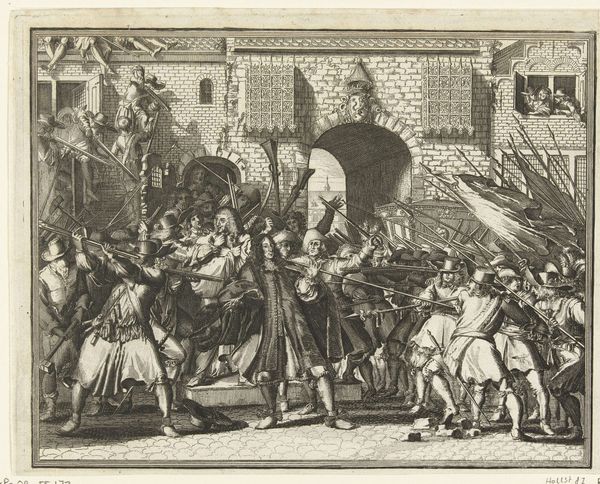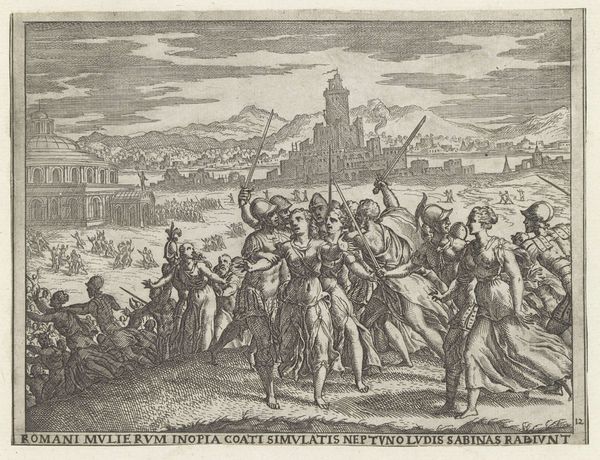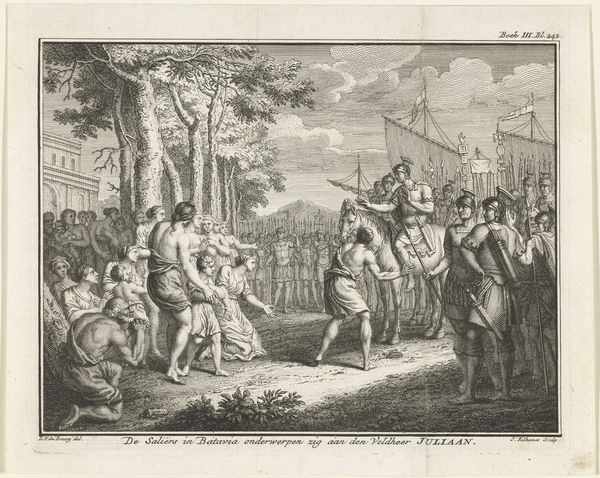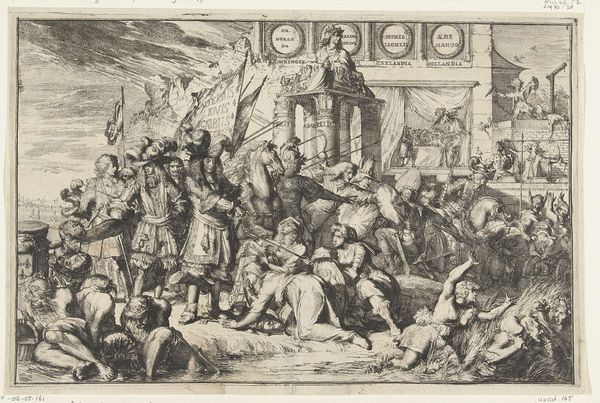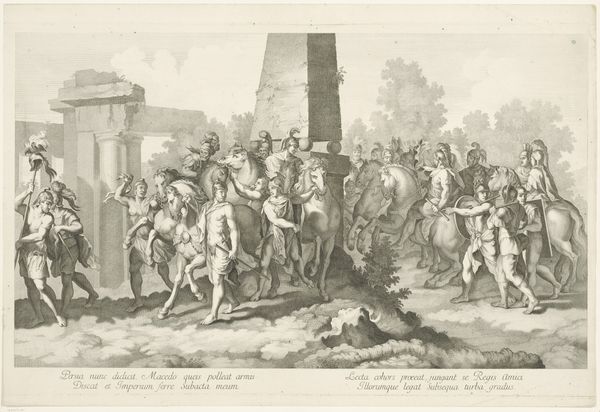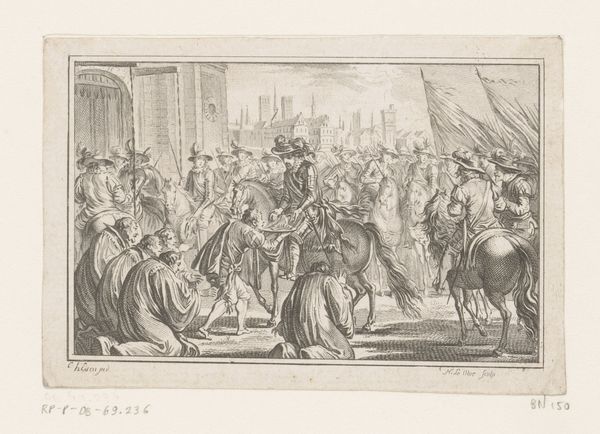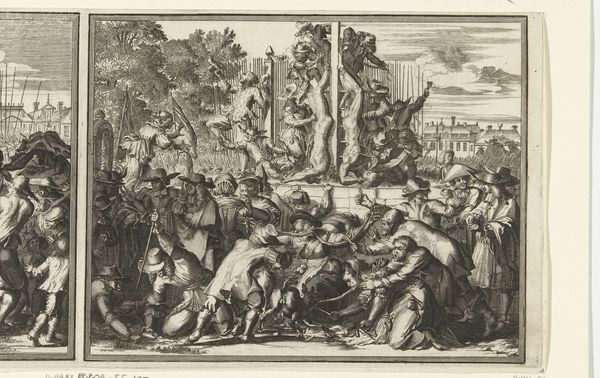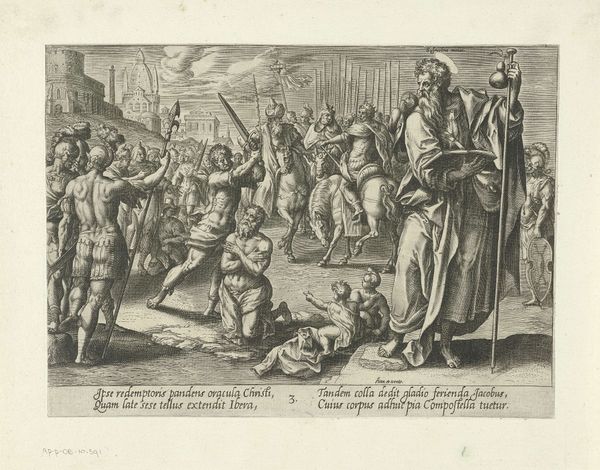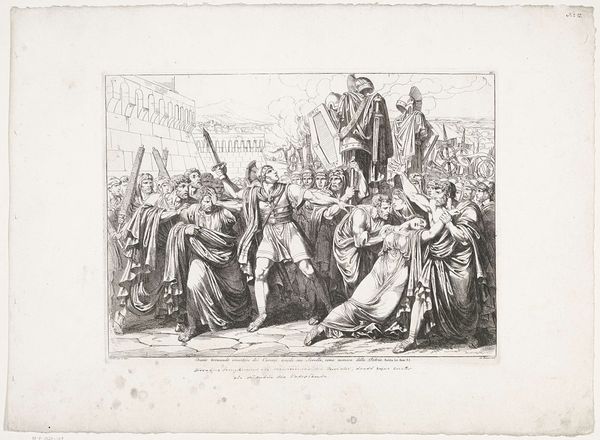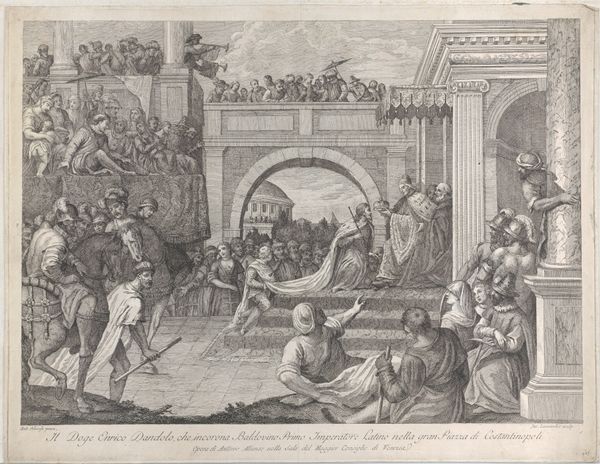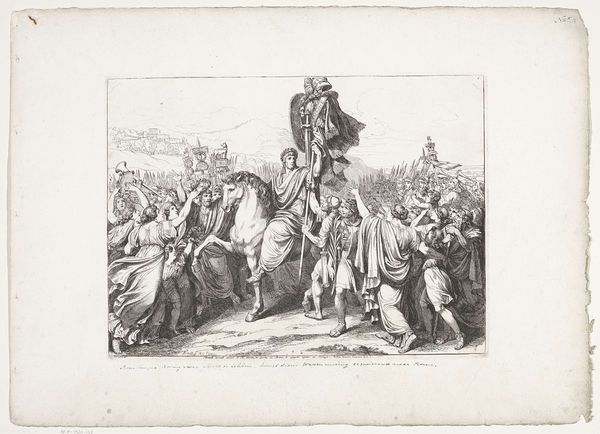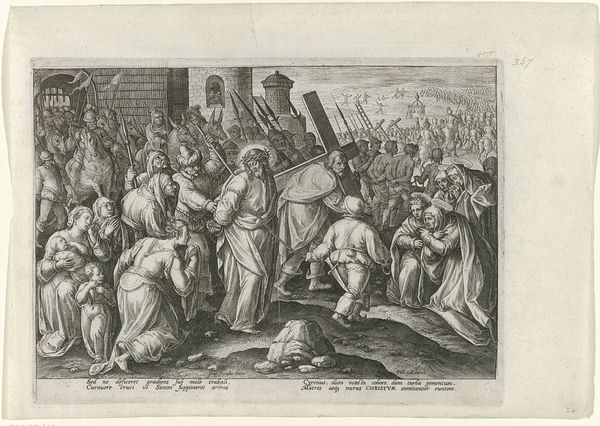
print, engraving
#
narrative-art
#
baroque
# print
#
landscape
#
classical-realism
#
figuration
#
cityscape
#
genre-painting
#
history-painting
#
academic-art
#
engraving
Dimensions: height 150 mm, width 192 mm
Copyright: Rijks Museum: Open Domain
Bernard Picart made this etching of the Triumph of Emperor Aurelian in 1733. The work’s strength resides in Picart’s complete mastery of the etching process. He uses precise linework to produce a highly detailed scene, full of texture and tonality, creating the illusion of depth and movement. Etching is an intaglio printmaking technique, which involves using acid to cut into a metal plate, traditionally copper or zinc. The plate is covered with a waxy ground, upon which the artist draws an image with a sharp needle. The plate is then immersed in acid, which bites into the exposed lines, creating grooves. Finally, the plate is inked, and the surface wiped clean so that ink remains only in the etched furrows. The process allows for fine, intricate lines, giving the print a crisp, detailed quality. Picart's skill in etching enables him to convey the splendor and ceremony of the triumphal procession, reflecting both the grandeur of Rome and the era’s taste for detailed historical representation. This highly skilled technique elevates printmaking from mere reproduction to a significant artistic achievement, blurring the boundaries between craft and fine art.
Comments
No comments
Be the first to comment and join the conversation on the ultimate creative platform.
